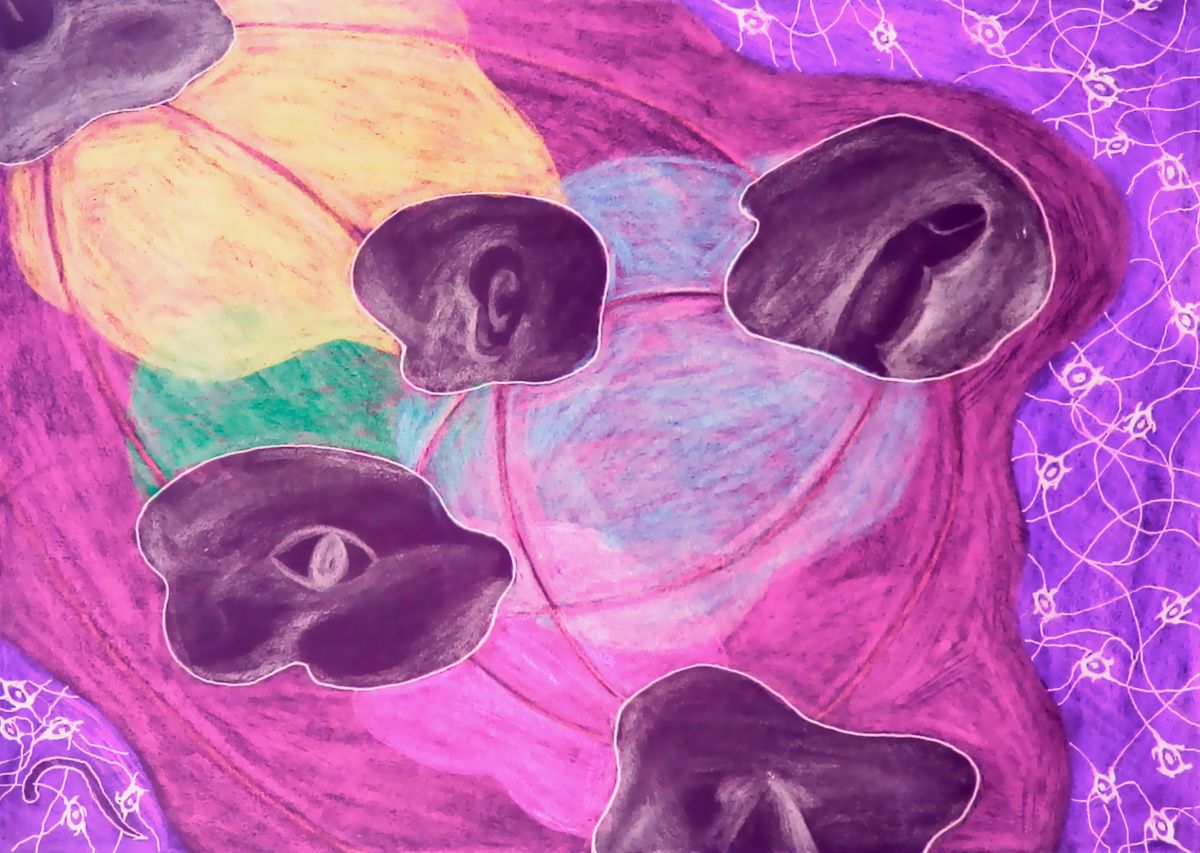Brain Synergy
How do our different brain regions work together to produce consciousness?

How do our different brain regions work together to produce consciousness?
Try a simple experiment. Hold your finger right in front of your face now, say, about one hands’ width away. Now focus on something behind it — perhaps the screen on which you’re reading this article. Close one eye, and observer where the finger is positioned in front of the screen.
Then, open that eye and close the other. Do you see the finger move?
This is a simple demonstration of the ‘parallax effect’. Look at something from a slightly different angle, and it will appear to be in a slightly different position. The further away the object is, the less the position will change, which means you can make out how far an object is by calculating how it appears in parallax.
Ever wondered why we need two eyes that see almost the same thing, instead of just one?
Neuroscientists and psychiatrist Giulio Tononi was not interested in the mathematics in your eyes. He was more interested in what happens after those calculations are made, when your brain perceives and feels what you’ve seen.
Giulio Tononi was interested in consciousness.
It is well known that the human brain processes information — like a computer, but in a more distributed way. This means that incoming information about the world is shipped off to several brain regions before being combined in myriad ways to provide us with experiences. A computer, on the contrary, has a simple route for each piece of arriving information.
To quantify this difference, Giulio Tononi went down a mathematical route, albeit a different one from the parallax effect. He developed the integrated information theory, abbreviated as IIT. Key to this theory is a quantity called Φ (phi), which can best be described as “the amount of synergistic information in a system”.
But what is synergy? Perhaps we should take a look at our eyes again.
Consider the information coming through your eyes when you look at the world. This information is of three kinds — unique, redundant, and synergistic.
Unique is easy. There’s always a small bit of the world that the corner of your left eye can see that your right eye cannot, and vice versa. This is the eye’s “unique” information.
Then comes what both eyes see at the same time, which you can continue to see if you close one eye or another. This is “redundant” information, because it’s coming more times than needed. It’s a bit like having a backup of files on your computer: even if you lose one version of the files, the other one’s still there to keep you going.
But then comes a kind of information that’s neither unique nor redundant: it only arises when both eyes work together. That’s right: I’m talking about 3D perception! Making use of the parallax effect, your eyes compare notes and work out how far away an object is — information that came neither from the left eye nor from the right, but from both working in unison.
This last kind of information is known as “synergistic” information between two sources. According to IIT, the quantity Φ — that is, the amount of synergistic information in the brain — denotes the amount of consciousness present.
According to IIT, this “integrated” information exists in a form greater than the sum of its parts. No sensory stimulus is experienced in isolation, but is swept up together with thoughts and feelings and other sensations to create your consciousness.
Humans are evolved to have colour vision. Try as you might, by squinting or turning off the lights, you cannot see in black and white.
It happens on a subtler level too. Have you ever tried to work in a noisy environment? You try to shut out the noise and focus on your work, but — at least for most people — the distractions still get in. Unfortunately, you’re not a seal, so you can’t just close your ears the way you do your eyes.
If only the world was mutable the same way your phone was, right?
This is possible on phones because phones store things separately. They are not, to use Giulio Tononi’s terminology, “integrated”. The photos of my dog on your phone are not immediately linked to the sound file of the dog barking located in the same folder. The phone does not know that they have anything to do with each other; they both exist in their own right, separately.
Brains, on the other hand, are integrated — which is where Integrated Information Theory gets its name. Brains remember through memories and associations — and, perhaps, that’s what makes us human.
Or, if not human, then at least into conscious life-forms.
The tiny worm C. elegans is known for being the subject of much neuroscience research, because it is one of the simplest creatures to possess a nervous system. It has 302 neurons, and scientists have managed to map out every one of them to an insane level of detail.
How’s the level of synergistic information — our Φ, if you remember — for these neurons?
To calculate Φ, we have to calculate for all the different parts of the system — and there are many ways the system can be divided into individual parts. Christopher Koch’s book Consciousness: Confessions of a Romantic Reductionist explains that this ‘number of ways to divide’ amounts are called ‘Bell numbers’. In the case of the 302 neurons, this comes to about 10⁶⁴⁸ possible combinations — that’s 10 followed by 648 zeroes!
For humans it is even harder. Unlike C. elegans we have a very complex brain with different parts that have interrelated functions.
In a recent study, researchers have taken a step towards the challenge by studying how information shared across different brain regions could be synergistic.
Consider visual information coming from the left eye to a particular brain region, and from the right eye to a different brain region. The question the researchers asked was: by looking at the activity of these two brain regions, could they make out if the information shared between these regions is unique, redundant or synergistic?
To answer this question, they looked at the information flowing from the past to the future in these brain regions — or rather, they drew on the information that had already been collected.
fMRI, or functional Magnetic Resonance Imaging, is a surgery-free technique to measure brain activity. It does this by using a magnetic field — about ten thousand times stronger than the Earth’s magnetic field — to detect the flow of blood in different parts of the brain. When the neurons in a brain area are more active, they send out more electrical signals and require more oxygen from the blood cells around them.
So, by seeing where the blood is flowing, fMRI can indirectly reveal where the brain is active.
Using fMRI scans, among other techniques, the Human Connectome Project was started to map all the connections between the neurons in healthy human brains. This would create an atlas of sorts, to compare and study brain disorders such as Alzheimer’s or schizophrenia.
But as we will now see, the information in this atlas can be used for things other than treating brain disorders.
Having taken fMRI data from the Human Connectome Project, the researchers proceeded to analyse it. They did this using a data science method called time-delayed mutual information or TDMI, used to analyse sparse or irregularly sampled data sets. TDMI is a complex concept, but the basic idea hinges on mutual information.
Remember how fMRI didn’t actually measure brain activity, but instead measured blood flow to infer where the brain activity was? That’s how ‘mutual information’ works: you take two random but related variables and figure out how much, by observing one of them, you can figure out about the other. It’s a bit like the two eyes you see with, but in reverse: if you look with one eye and know how far an object is, you can guess what the second eye will see since you have most of he common information.
In this case, though, it also involved setting up a linear system of 15 equations with 16 unknowns.
Finally, the TDMI was computed from the fMRI data taken from the Human Connectome Project. This information was segregated into our three categories: redundant, unique and synergistic information. And then, the researchers looked to see where in the brain each kind of information was coming from.
The results showed a clear pattern! Redundant interactions seemed to be associated with lower-level brain regions, involved in things like sensory processing (remember the eyes?). Synergistic interactions, on the other hand were associated with higher-level brain regions involved in more complex cognition tasks such as connecting a dog’s bark with the annoyed animal in front of you.
Is there really a connection between synergy levels and regions of your brain? Or was it just a coincidence in this particular dataset?
To validate their hypothesis, the researchers used NeuroSynth — a platform that takes thousands of published fMRI studies for a given topic, and then gives you a composite map of the brain activity for all the scans put together, on average. This gave them a sort of heat map, indicating which parts of the brains were more active and which less.
They then used diffusion tractography to find the structural connections in the brain. It’s a bit like Google Maps tracking vehicles to figure out where the roads are, except in this case the traffic is hydrogen atoms moving through a nerve fibre.
Here’s what the researchers found: synergy was more common when two regions had ‘polysynaptic connections’ — that is, connection that are indirectly connected by having other regions on the way. Perhaps this allows more information to accumulate between the two regions, in a similar way to why you’d expect to find more human dwellings on a well-populated route with many cities on the way, than you would on a long, direct road going through empty lands or deserts.
They also compared human brain activity with that of other primates, and realised that humans exhibit more synergy.
“Is that all?” you may ask. We’ve gone on a long and laboursome route, drawing on various works and strategies, and analysed things in minute detail — and what we get at the end is…a couple of observations and more questions?
This tour-de-force of research perhaps demonstrates why cognition is such a feat of the human brain. But if we step back and look through a more philosophical lens, it also shows how advanced our science has become.
Look at what the researchers had to do: use diffusion tractography and NeuroSynth, to verify the hypotheses raised by the TDMI analysis, which was in turn computed fMRI data previously measured and collected by the Human Connectome Project. Each of these pieces was important in its own right, and only by bringing them all together were we able to take a slightly clearer peek into the workings of the human brain.
Brain research, like the human brain itself, is starting to look increasingly synergistic.
